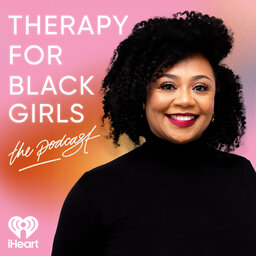Session 353: Art Therapy 101
Playing with markers, clay, and stencils is something we may recall fondly from our youth, but today dismiss as childish. Art Therapy, however, is a very legitimate and relaxing form of therapy for all ages that challenges us to think through our emotions by putting pen to paper. To tell us more, today we're joined by Chicago based artist and registered art therapist, Pierra D. Brown. Since graduating with her Master’s from the School of the Art Institute, she’s worked both in communities, schools, and hospitals to provide clinical services to people of all ages.
During our conversation, Pierra and I discuss the training needed to become an art therapist, how art therapy can be used as an alternative or in supplement with traditional talk therapy, and what art therapy can teach us about shedding our perfectionist habits.
About the Podcast
The Therapy for Black Girls Podcast is a weekly conversation with Dr. Joy Harden Bradford, a licensed Psychologist in Atlanta, Georgia, about all things mental health, personal development, and all the small decisions we can make to become the best possible versions of ourselves.
Resources & Announcements
We're having our 1st Live Podcast Event on Friday, April 12, 2024 at the Variety Playhouse in Atlanta, GA. Tickets are now available and can be purchased at therapyforblackgirls.com/liveshow.
Visit our Amazon Store for all the books mentioned on the podcast.
Grab your copy of Sisterhood Heals.
Where to Find Pierra
Stay Connected
Is there a topic you'd like covered on the podcast? Submit it at therapyforblackgirls.com/mailbox.
If you're looking for a therapist in your area, check out the directory at https://www.therapyforblackgirls.com/directory.
Take the info from the podcast to the next level by joining us in the Therapy for Black Girls Sister Circle community.therapyforblackgirls.com
Grab your copy of our guided affirmation and other TBG Merch at therapyforblackgirls.com/shop.
The hashtag for the podcast is #TBGinSession.
Make sure to follow us on social media:
Twitter: @therapy4bgirls
Instagram: @therapyforblackgirls
Facebook: @therapyforblackgirls
Our Production Team
Executive Producers: Dennison Bradford & Maya Cole Howard
Producers: Fredia Lucas & Ellice Ellis
Production Intern: Zariah Taylor
 Therapy for Black Girls
Therapy for Black Girls


